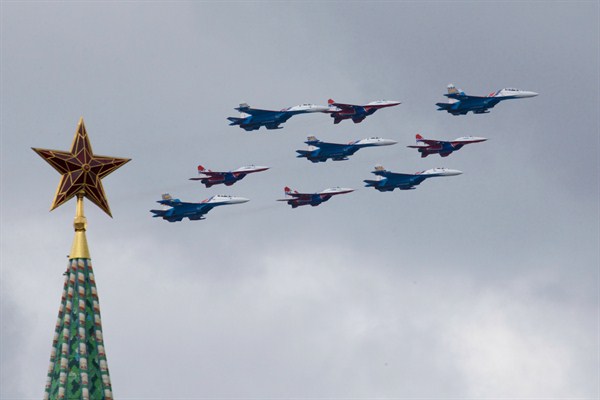If you read a recent report by IHS Jane’s that Russia is cutting its defense budget by over 25 percent—supposedly the “largest cut to military expenditure in the country since the early 1990s”—then you might be given the impression that Moscow’s military is finally succumbing to economic woes. But reports of the death of Russia’s defense budget have been grossly exaggerated. Simply put, it’s not true.
Not only did Jane’s get the story largely wrong about Russia's defense budget, claiming that Russia’s defense budget would fall from 3.8 trillion rubles, or $65.4 billion, to 2.8 trillion, but deep reductions in spending are also unlikely for Russia’s next State Armament Program, known as GPV. At least for the foreseeable future, Russian armed forces will continue to expand in size, create new unit formations, and deploy new or modernized equipment. The Russian government is making modest reductions in spending with an eye to sustaining this vision of force expansion and modernization. Although budgets and spending are rarely interesting topics, Jane’s report last week—and the true story of what’s happening with Russian defense spending—merit attention.
The Russian defense budget in 2016 was actually 3.09 trillion—about $54 billion—and will drop to 2.84 trillion rubles in 2017, a reduction of around 7 to 8 percent. In fact, the Ministry of Finance had announced plans to institute a 6 percent reduction in defense spending over the course of a three-year budget plan, from 2017 to 2019. This is actually the third straight year of cuts to Russia's defense budget, with a 3.8 percent reduction in 2015 and 5 percent reduction in 2016. Given that other federal agencies had to absorb 10 percent cuts, the Russian Ministry of Defense is actually doing remarkably well under a general spending sequester.

